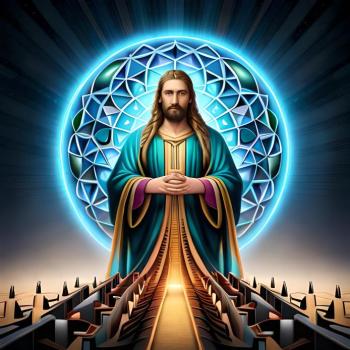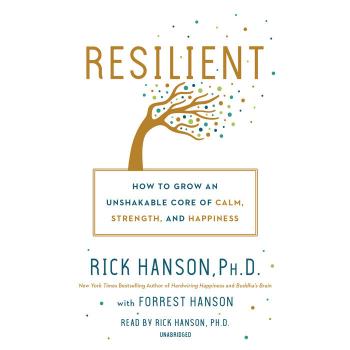Sacramental Politics by Brian Kaylor
Sacramental Politics by Brian Kaylor is a unique look into the intersection between politics and religious practice. In this book, Kaylor thoroughly explores how religion impacts politics. He first explores how prayers are both a religious and political act (36). He compares and contrasts how both political parties use religious terms in political speeches (41). He shares how the presidential nomination convention take on a religious nature (44-46). Kaylor notes that the prayers served similar purposes (47):
“Like prayers at Republican conventions, those at Democratic ones highlighted key political issues for the Party.”
Prayers used in partisan politics depict political conventions as sacramental acts (47). Kaylor compares the vocabulary used by both parties in their speeches. Republicans used more references to the nation than to God. The country would be considered greater in prayers than God was (49). So public prayer were a way for a political party to promote their agenda.
Kaylor shifts from public prayers to public endorsements of candidates in church services and religious gatherings (58). He makes the proper assessment that endorsing a political candidate in a campaign is still political, even if it is done in a religious worship service (61-62). Pussy Riots’ prayer in the Russian Orthodox Cathredal was an example of political protest against the policies of Vladimir Putin (63).
Kaylor shows how religious talk can also be policy promotion. For example, prayer services were used after 9/11 to declare that the country was unified, while in the prayer service following Katrina service, the leaders prayed that the nation would become unified (91). Kaylor makes an important distinction about unity and public policy (94):
“While the Katrina service brought prayers for unity, the 9/11 service brought declarations that unity
would bring military victory.”
According to Kaylor, the 9/11 prayer service gave President Bush the justification to go to war against the Islamic terrorists (95). It is therefore ironic that President Clinton used the prayer breakfast on September 11, 1998 to confess his sin of adultery and ask for forgiveness (105).
While politicians use religion to promote a political agenda, pastors use politics to promote a religious agenda. Pastor Rick Warren conducted what he called the “Civil Forum on the Presidency” at his church Saddleback Valley Community Church. There, he moderated questions for Barack Obama and John McCain (113). President Obama, like President Bush before him, confessed his faith in Jesus Christ during this summit at Saddleback Church (114). During this forum, Warren shared an interesting evangelical response to the roles of the state and religion (115):
“We believe in the separation of church and state, but we do not believe in the separation of faith and politics because faith is just a worldview and everybody has some kind of worldview.”
By using the phrase “worldview”, Warren is noting the influence of his religious worldview (his religious agenda) on politics. In this case, politics is a subset of religion. Kaylor notes that the issues which Warren addresses in the forum line up closely with the Republican Party. Yet, Warren’s tone was not so blatantly partisan (115). This forum, which was hosted by Pastor Warren illustrates how pastoral power as a leadership model has been used in democratic societies. Kaylor summarizes about the importance of pastoral power (119):
“Unlike the king-leader who merely wields sword, the shepherd-leader guards the path to salvation.”
While I think Kaylor is correct that pastoral power exists, I think it has lost its influence in the most recent elections. Unlike the 1980s, when Pat Robertson and Jerry Falwell influenced the Republican Party, today’s pastors do not wield such power and influence over politics. The fact that both Obama and Romney declined to attend another forum at Warren’s church illustrates the decline of pastor power in politics. Even Catholics are not immune to this decline (121).
One exception perhaps has been Joshua Dubois who wrote The President’s Devotionals. He was the head of the Office of Faith Based Initiatives under President Obama and was considered “pastor-in-chief” (131). Kaylor describes how DuBois used his pastoral power through the use of daily devotions sent to Obama by email. Kaylor shows how these devotionals, which were crafted during important events of the presidency influenced the President’s decisions on a day-to-day basis. One can see how DuBois’s writings influenced the president, illustrating pastoral power. Unlike Warren and the Catholic Church, the place of pastoral power shifted from the church to the Oval Office.
Kaylor shifts prayer as public policy to prayer as a right of religious expression in public places. He notes that Russel Moore of the ERLC of the SBC defends the practice of public prayers (140). Moore recognizes that public prayer that start governmental meetings transforms the space into a religious service (141). Kaylor notes that moving a religious act to a public political space does not remove the religious meaning and function. Instead, it adds a new audience to the religious service (142).
Kaylor ends the book with an analysis of how powerful political power has become upon religious institutions. For example, he notes that the words “liturgy” and “ekklesia” are religious terms which came from political terms (157). Kaylor describes how churches communicate political values even in the way flags are placed in the worship center. According to the United States Flag Code, American flags are placed in “superior prominence” (to the right of the speaker), This communicates that the United States is the superior kingdom to Christ (178). It conveys a message that the United States requires a higher allegiance than Christ. In essence, churches communicate to their worshippers every Sunday that they are bowing down to Caesar. It is an interesting and yet subtle distinction of political loyalty conveyed by design.
Kaylor ends the book with a series of examples of what he calls “religious worship as inherit political action”. He cites three examples. The first example is Election Day Communion, an effort in the 2012 election to bring people together (188-196). The second example is Clarence Jordan. He was an example of a person who risked religious and political outrage for his beliefs (196-202). Jordan founded Koinonia Farms where white and blacks could live and work together in the 1950s. This project became the inspiration for Habitat for Humanity.
Kaylor explains that Jordan also wrote a translation of the Bible entitled “The Cotton Patch Gospel“. He changed the setting from the first century to the twentieth century American South. By changing the setting as well as the language, Jordan was able to make political statements using the sacred text. (I have personally read the Cotton Patch Gospel and I found refreshing in the way it is written. It is a uniquely American translation which speaks to many people in the Southern parts of the United States).
Kaylor cites a third example – religious literature. He explains how religious literature can have a political impact. Prayer books and songbooks all contain political messages (210). From the Book of Common Prayer to the Baptist Hymnal, each piece of literature is influenced by political views and can also influence a person’s political viewpoint. Kaylor notes an interesting change in the Baptist Hymnal from the section of songs under the heading “God and Country” in the 1991 version to “Patriotic” in the 2008 version. This change shows the influence of “American exceptionalism” in the religious-political worldview of the leaders of the Southern Baptist Convention (211).
Kaylor shares a historical example of how Christians can promote religious values and at the same time oppose the government in religious worship. He describes how a confession or creed can act as religious worship even in politics. He shares the story of the Confessing Church and its confession of faith called the “Barmen Declaration.” This creed opposed the Nazi regime and its influence on the Catholic and Lutheran church (222).
Overall, I thought this book was a comprehensive and objective look of the intersection of politics and religion. Kaylor does a good job of showing how intertwined religion and politics are in America. As a pastor, I noted with sadness the decline of pastoral power and influence. Although the Bible teaches us to allow the government to serve as God’s agents (Romans 13:4-6), this book shows that pastors still need to speak in the political arena.
#SpeakeasySacramentalPolitics
Disclosure: This is a personal book review. This review does not constitute the views of the Executive Board of the Missouri Baptist Convention.
Disclosure of Material Connection: I received this book free from the author and/or publisher through the Speakeasy blogging book review network. I was not required to write a positive review. The opinions I have expressed are my own. I am disclosing this in accordance with the Federal Trade Commission’s 16 CFR,Part 255.













